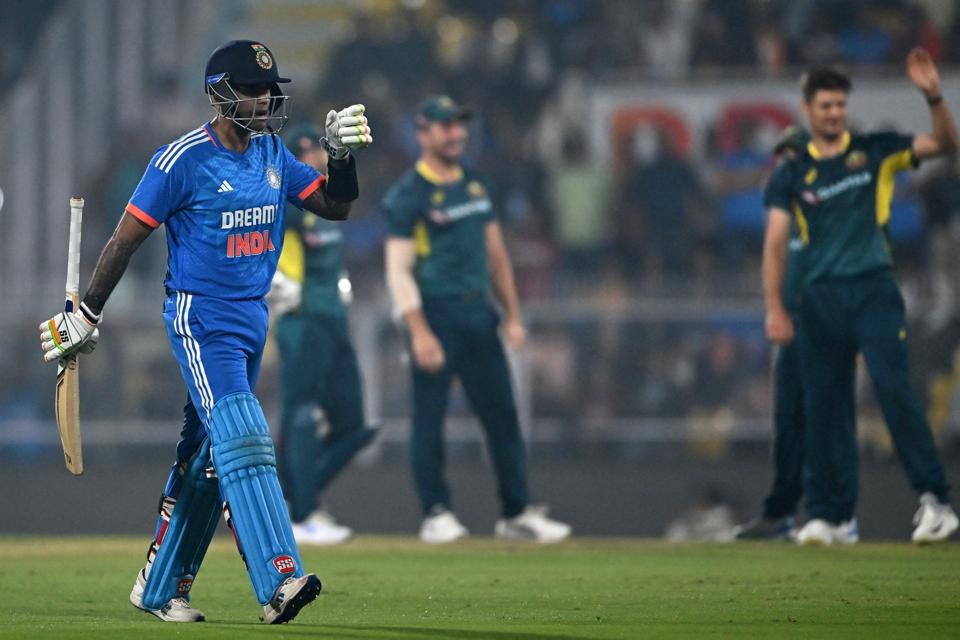Nine days after Australia memorably claimed the World Cup with an upset over host India, their greatest ever triumph at an event they’ve long dominated, Pat Cummins lifted the trophy on home soil.
But it wasn’t in front of an adoring mass of fans in a ticker-tape parade that once greeted Australia’s returning heroes. Instead the welcome home ceremony was rather modest and held during the lunch break of a Sheffield Shield match at the Sydney Cricket Ground.
There were no fans there and just a smattering of family, friends, dignitaries and media members. It was still a better sight than Cummins’ only other public appearance since the World Cup – at the airport after arrival when he was garbed in slacks and spectacles to look something like if Clark Kent stepped off a plane.
Australia were essentially denied an opportunity of a public celebration due to half of the team still being in India for a baffling five-match T20Is. This isn’t an outlier. A year ago, England had to front up for a three-match ODI series against Australia just days after they lifted the T20 World Cup. It’s a series that attracted low crowds and even less people remember it.
The series was shoehorned into cricket’s crammed calendar purely for financial reasons with contests featuring powerhouses India, Australia and England money-spinners even with such low stakes.
Of course, organizers can dress up the series as the start of preparations for the T20 World Cup just over six months away in a saturation of major ICC events. But, simply, this series is overkill. There are no Australian cricket reporters covering the series from location and even in cricket-crazy India there appears to be fatigue. Both teams are playing second-string teams filled mostly with fringe players.
It speaks of the problem with cricket’s calendar which is brimming to capacity. And it’s likely to get even worse as new T20 franchise leagues appear and existing ones expand. The recent reports that Saudi Arabia was set to invest $30 billion into the Indian Premier League only just heightens long-held suspicions that cricket’s richest league could extend to the lengths seen in major American leagues.
There is no doubt cricket’s future revolves around the lucrative T20 leagues with an increasing number of players from financially-stricken cricket countries already choosing teams over their nations. It means that international cricket is struggling to breathe with the 50-over format likely to succumb first.
Test cricket still holds cache for now, essentially among the ‘big three’ countries, while T20 cricket is the growth engine of the sport and its three-hour speed appeals to a younger generation with shorter attention spans.
After an engrossing knockout stage of the World Cup, there was a certain nostalgia over the ODI format and a reminder of why the 50-over game can appeal when there are stakes. Players still rate it as a more prestigious prize than the T20 World Cup.
“I think it’s number one (in his career),” said Australia allrounder Mitchell Marsh, who has won World Cups in both formats along with the Ashes – Test cricket’s most treasured contest. “I think the one-day format is extremely hard to win and to be consistent in.”
Unfortunately with the scrapping of the 13-team Super League, there isn’t much context for ODI cricket and it appears the format will wither away after this current cycle of events with World Cups scheduled for 2027 and 2031.
ODI’s space will likely be gobbled by T20 franchise leagues, which for all their receptiveness and soulless feel do at least provide a narrative – even if it is sometimes manufactured.
It’s the type of drama largely absent in a mishmash of an international calendar that is too confusing for most fans to properly devote their time to.

